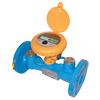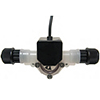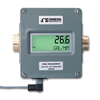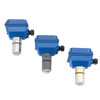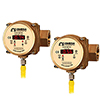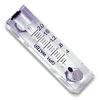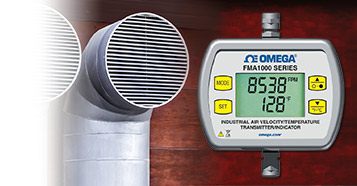 Calculating flow rates through ducts, pipes, hoods and stacks (collectively called ducts for our purposes), has never been difficult. The cross-sectional area of the duct is multiplied by the average velocity of the fluid to find the volume per time or flow rate. Simple.
Calculating flow rates through ducts, pipes, hoods and stacks (collectively called ducts for our purposes), has never been difficult. The cross-sectional area of the duct is multiplied by the average velocity of the fluid to find the volume per time or flow rate. Simple.
Data collection, accurately and precisely measuring air velocity across ducts, has been a difficult task. And, poor data collection procedures produce the errors in duct balancing. Air flow measurement instruments, anemometers, have been limited in the past by time.
The newest microprocessor-based anemometers complete duct air flow measurement data collection accurately even before the patience of the HVAC tech wears out.
How to Measure Velocity of Air
The more precise question is how to measure the average velocity of air across differing cross-sections of duct.
The physics are relatively simple:
The physics are relatively simple:
- Air is slowed by friction with contact to the edge of the duct
- The greatest velocity is achieved under laminar flow conditions in the frictionless middle of the cross-section
- The velocity profile of the duct is dependent on the shape of the duct (minimizing perimeter walls to achieve cross-sectional area) and the force pushing the air

Given these facts, how many measurements make a good database?
The grid lines which lay out the duct flow measurement points are traverses. The log-linear method provides high accuracy (±3%) in flow totalization by measuring air flow closest the edges of the duct space preferentially.
Round Ducts

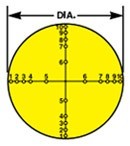
A total of eighteen readings accurately describes the air flow velocity.
In the case where only two traverses can be measure, set them at 90 degrees and take five samples on each radius. The first four evenly spread over the first half of the radius starting at the edge and moving toward the center. The fifth point is two-thirds toward the center.
These twenty data points will not produce as accurate an average as the eighteen with three traverses, but the results are acceptable.
Rectangular or Square Ducts
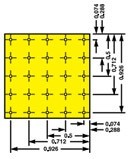
These ducts require the sixteen readings at a minimum near the edge (about 7% total distance) with the other nine evenly spread along the grid. Notice sixty-four percent of the rectangular duct data points will be close to the walls of the duct while only thirty-three percent of round duct data points reflect the friction from the walls. This measurement demonstrates the efficiency of the round duct. Which, by the way, does not mean round is always the best solution.
Gather the data from these readings and simply calculate the mean average. Or, let your microprocessor do the work. You have calculated the air flow velocity.
How to Measure Cross-Sectional Area
Sounds easy enough, length multiplied by width or the radius squared times pi.
Three words: remember the grille.
If no grille is used, the application factor is 1.00. So the crosssectional area of the duct is unmodified.
If the grille is square punched, multiply the gross area by .88. A bar grille is modified by a factor of .78; and a steel strip grille by .73.
The grille serves to slow the velocity of air as well as disperse it. Be mindful of this factor.
Three words: remember the grille.
If no grille is used, the application factor is 1.00. So the crosssectional area of the duct is unmodified.
If the grille is square punched, multiply the gross area by .88. A bar grille is modified by a factor of .78; and a steel strip grille by .73.
The grille serves to slow the velocity of air as well as disperse it. Be mindful of this factor.
Devices to Calculate Flow Rates
You have calculated the air flow, cross-sectional net area and multiplied them together for a flow rate.
Q = FAV, where:
F = application factor(see table)
A = designated area in square feet
F = application factor(see table)
A = designated area in square feet
| Grille Type | Application Factor, F | Designated Area |
| None | 1.00 | Full duct area |
| Square Punched | 0.88 | Free (daylight) area |
| Bar | 0.78 | Core Area |
| Steel Strip | 0.73 | Core Area |

We believe it is important for technicians to understand the theory of air flow measurement, to recognize when a data point is unlikely to be correct, a false reading, or a calculation does not seem correct and should be double checked. In today’s results-now environment, these new technologies speed the process along. Your experience will double-check the process, but this instrumentation collects and double checks raw data quickly.
The new models are sophisticated in flow rate calculation and output in a readily-usable format. Air duct balancing has become less time consuming and more efficient, more science than art.




